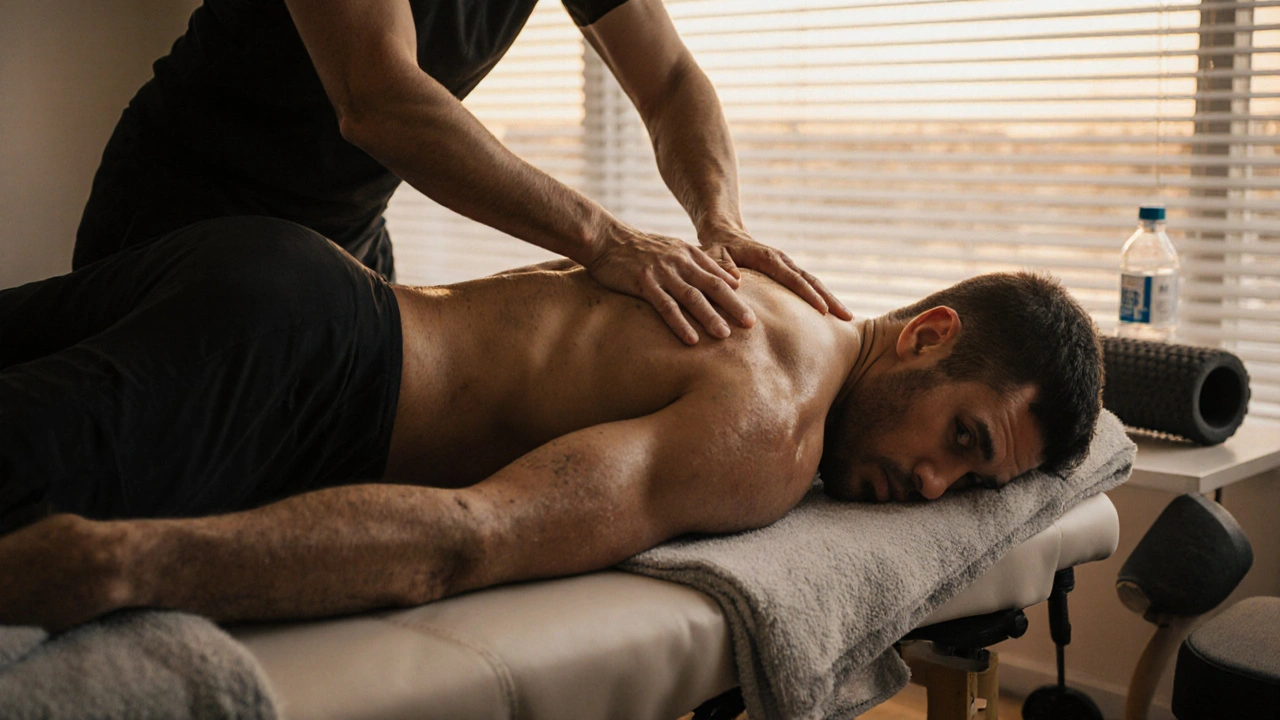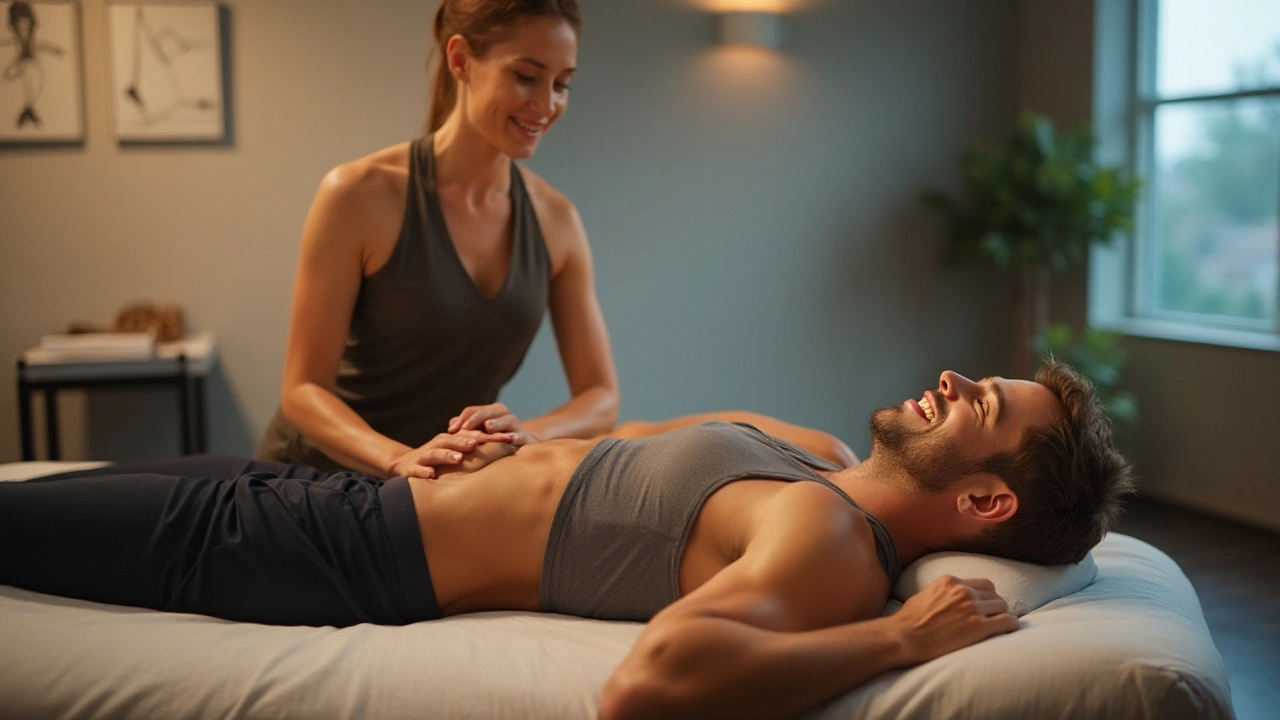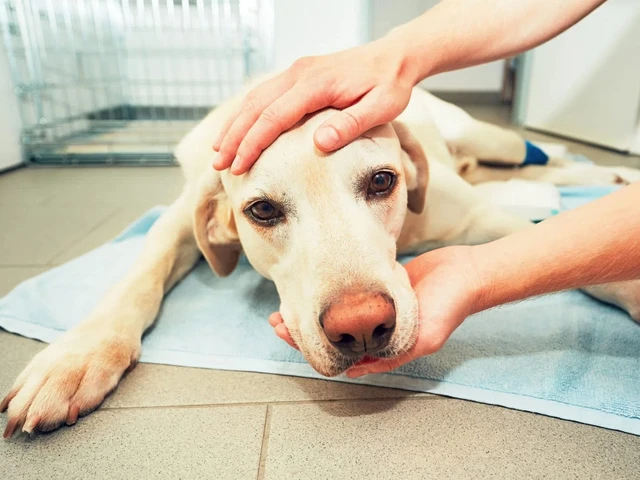Sports therapy: Practical recovery and performance tips
Want to recover faster and stay in the game longer? Sports therapy is a hands-on way to speed healing, reduce pain, and push performance—whether you run marathons or your dog races at the park. You don’t need fancy gear to get results. Small, consistent steps make a big difference.
What sports therapy really does
Think of sports therapy as targeted care for stressed muscles, joints, and movement patterns. It includes sports massage, myofascial release, neuromuscular techniques, and simple rehab exercises. The goal: restore movement, cut pain, and stop problems from coming back. For dogs, therapists use gentler pressure and focus on gait, joint comfort, and muscle balance.
Here are clear, practical ways sports therapy helps you and your canine companion:
- Speeds recovery after hard workouts by improving blood flow and flushing waste from muscles.
- Reduces tight spots and trigger points that limit movement and raise injury risk.
- Improves joint range and movement patterns so you move more efficiently.
- Offers targeted exercises and home routines to prevent repeat injuries.
Simple, effective routines you can try
Warm-up and cool-down matter. Ten minutes of dynamic moves before activity and a short walk plus gentle stretching after saves hours of pain later. Add any of these 5 habits to your routine:
1) Foam roll or use a massage ball for 5–10 minutes on tight areas. Focus on hips, calves, quads, and for dogs, the shoulders and hindquarters—avoid direct pressure on bones.
2) Use targeted massage 1–2 times a week. A focused 15–20 minute session on sore areas improves circulation and tone. If it’s painful, ease off—pain should guide intensity.
3) Add two strength moves that match your sport: single-leg deadlifts for runners, scapular rows for swimmers. For dogs, ask a vet or canine physio for guided strengthening like controlled sit-to-stands.
4) Prioritize sleep, hydration, and protein within 45 minutes post-exercise. These fuel tissue repair. Omega-3s help with inflammation—useful for both humans and dogs under vet guidance.
5) Watch movement patterns. If you limp, favor one side, or your dog drags a paw, get a pro assessment. Small imbalances become big problems fast.
When to see a professional? If pain lasts beyond a few days, if range of motion drops, or if you (or your dog) show swelling or instability, book a sports therapist or vet. Professionals use hands-on techniques plus rehab plans that speed safe return to activity.
Sports therapy isn’t a one-off fix. It's a toolbox: massage, manual work, movement training, and smart recovery habits. Start small—add one habit this week—and you’ll notice less stiffness and smarter performance in a few sessions. Want quick reads on specific techniques? Check the related posts on sports massage, myofascial release, and neuromuscular therapy to pick the best next step.

How Sports Massage Boosts Athletic Performance and Recovery
Sports massage isn't just for pros-it boosts recovery, reduces soreness, and improves movement for anyone who trains hard. Learn how targeted massage enhances performance and prevents injury.

Why More Athletes Are Choosing Rolfing for Better Performance
More athletes are turning to Rolfing for enhanced performance and faster recovery. Through a series of sessions focused on the body's connective tissues, this technique promises to improve flexibility, reduce pain, and optimize alignment. Discover why it's becoming a go-to option for sports professionals looking to gain an edge.

Revitalize Your Skin with Gua Sha Techniques
Jun, 25 2024

The Wonders of Gua Sha: A Comprehensive Guide
Aug, 8 2023


